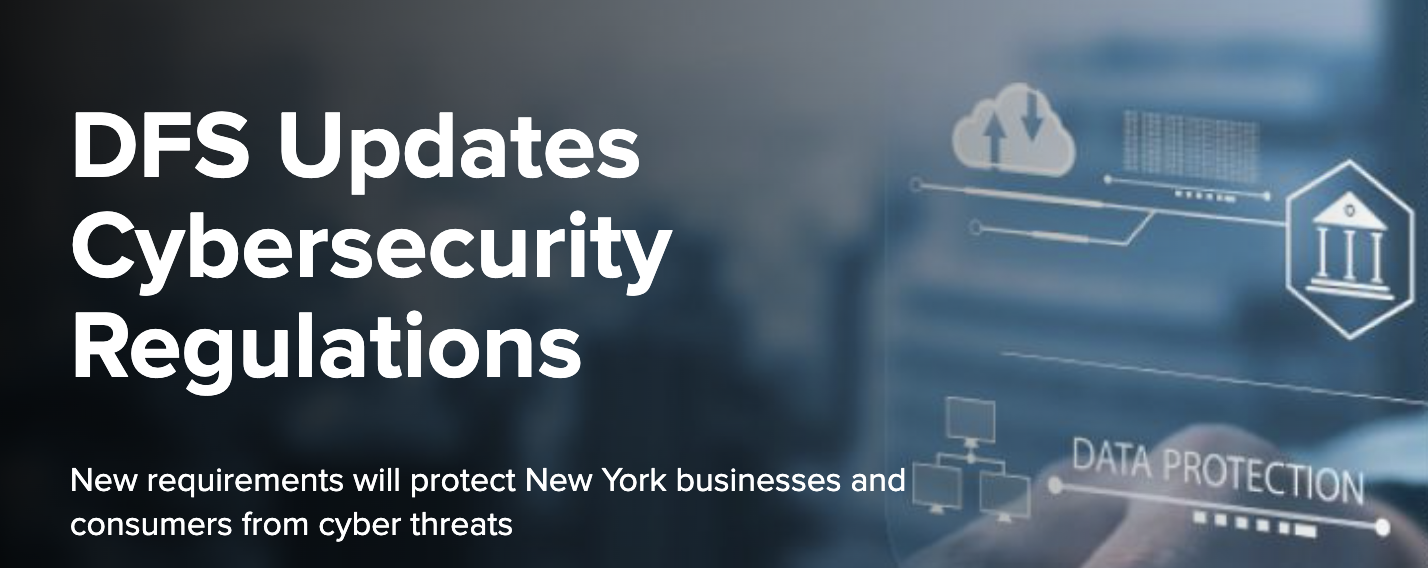NYDFS Regulatory Changes: Vulnerability Management and Risk Assessment

The financial sector is constantly adapting to emerging threats and regulatory changes. The New York Department of Financial Services (NYDFS) is at the forefront of cybersecurity regulation, ensuring that covered entities within the state maintain robust cybersecurity programs.
In this blog post, we’ll dive into the recent changes to NYDFS regulations, specifically focusing on vulnerability management and an updated definition of risk assessment.
NYDFS 500.5: The Original Requirements for penetration testing and vulnerability assessments
Before we dive into the new regulations, let’s briefly recap the original requirements outlined in NYDFS 500.5 for penetration testing and vulnerability assessments. These requirements were designed to assess the effectiveness of the cybersecurity programs of covered entities. They mandated:
- Annual penetration testing of information systems based on identified risks.
- Bi-annual vulnerability assessments, including systematic scans or reviews, to identify publicly known cybersecurity vulnerabilities.
These initial requirements represented a proactive approach to cybersecurity, addressing the need for continuous monitoring and testing to mitigate potential threats effectively.
NYDFS 500.5: The New Requirements for Vulnerability Management
NYDFS Regulations: https://www.dfs.ny.gov/industry_guidance/cybersecurity
Now, let’s explore the updated NYDFS regulations pertaining to vulnerability management.
These new requirements further enhance the cybersecurity posture of covered entities by incorporating the latest industry best practices.
The key changes include:
- Expanded Scope: The new regulations emphasize the importance of assessing vulnerabilities comprehensively. Covered entities are now required to conduct both internal and external penetration testing of their information systems at least annually. This expanded scope ensures that potential threats from both inside and outside the organization are thoroughly examined.
- Automated Scans and Manual Reviews: Covered entities must perform automated scans of their information systems and manually review systems not covered by automated scans. The frequency of these scans and reviews should be determined by the risk assessment and conducted promptly after any material system changes. This approach ensures that vulnerabilities are discovered, analyzed, and reported in a timely manner.
- Timely Vulnerability Alerts: Covered entities are now mandated to have a monitoring process in place to promptly inform them of new security vulnerabilities. Staying informed about emerging threats allows organizations to respond swiftly and effectively.
- Priority-Based Remediation: When it comes to vulnerability remediation, covered entities must prioritize vulnerabilities based on the risk they pose. This approach ensures that resources are allocated efficiently to address the most critical vulnerabilities first
Learn more about Nucleus Security Unified Vulnerability Management
Updated Definition of Risk Assessment
In addition to the changes in vulnerability management, the NYDFS regulations have also updated the definition of risk assessment.
The new definition provides a more comprehensive understanding of this critical process.
It now states:
“Risk assessment means the process of identifying, estimating and prioritizing cybersecurity risks to organizational operations (including mission, functions, image and reputation), organizational assets, individuals, customers, consumers, other organizations, and critical infrastructure resulting from the operation of an information system. Risk assessments incorporate threat and vulnerability analyses and consider mitigations provided by security controls planned or in place.”
Implementing Vulnerability Management
To comply with these new NYDFS regulations effectively, covered entities should:
- Develop and implement written policies and procedures for vulnerability management that are designed to assess and maintain the effectiveness of its cybersecurity program.
- These policies and procedures shall be designed to ensure that covered entities:
(a) conduct, at a minimum:
(1) penetration testing of their information systems from both inside and outside the information systems’ boundaries by a qualified internal or external party at least annually; and
(2) automated scans of information systems, and a manual review of systems not covered by such scans, for the purpose of discovering, analyzing and reporting vulnerabilities at a frequency determined by the risk assessment, and promptly after any material system changes;
(b) are promptly informed of new security vulnerabilities by having a monitoring process in place; and
(c) timely remediate vulnerabilities, giving priority to vulnerabilities based on the risk they pose to the covered entity.
The updated NYDFS regulations for vulnerability management and the expanded definition of risk assessment represent significant steps forward in enhancing the cybersecurity posture of covered entities.
By expanding the scope of testing, encouraging timely vulnerability alerts, and prioritizing remediation, these regulations help organizations stay ahead of emerging threats and vulnerabilities.
Covered entities should embrace these updates as an opportunity to strengthen their cybersecurity resilience, protect their assets, and maintain the trust of their customers and partners in an increasingly interconnected digital world.
Watch a Demo of Nucleus Security Unified Vulnerability Management Platform
By when do I need to comply?
Cybersecurity Implementation Timeline for Covered and Class A Entities
Section 500.5(a)(1), (b), and (c) by April 29, 2024
Section 500.5(a)(2) by May 1, 2025
See Nucleus in Action
Discover how unified, risk-based automation can transform your vulnerability management.






























